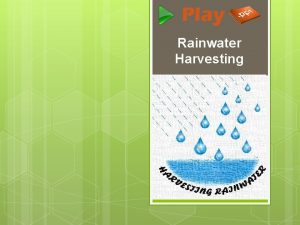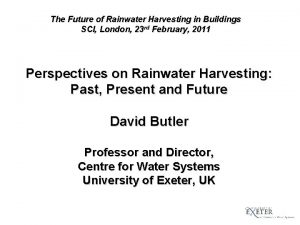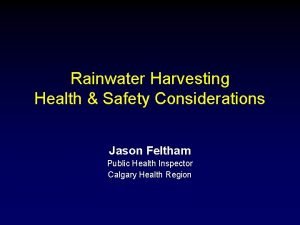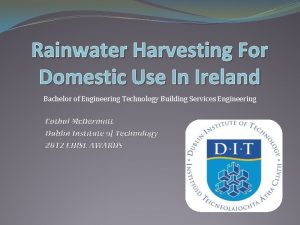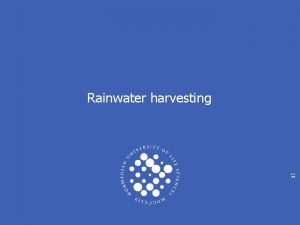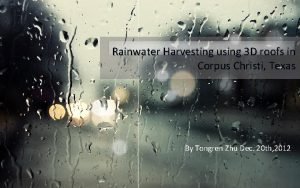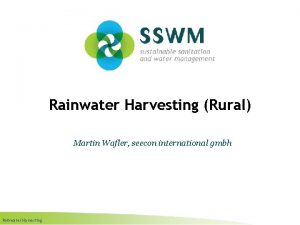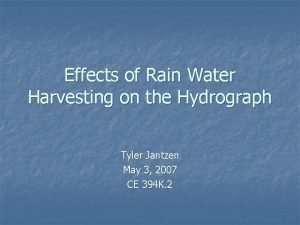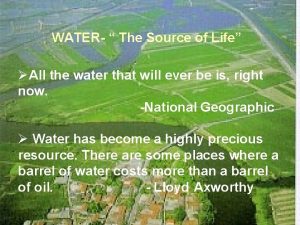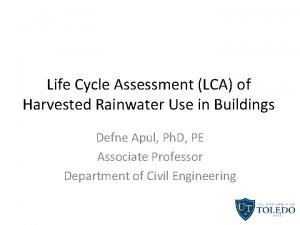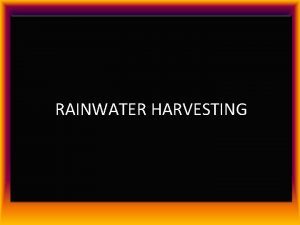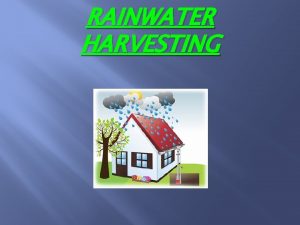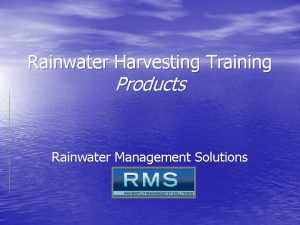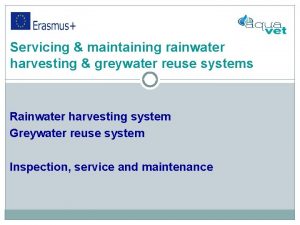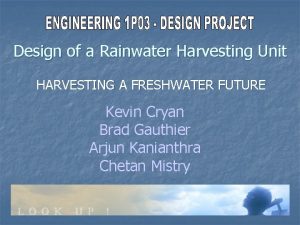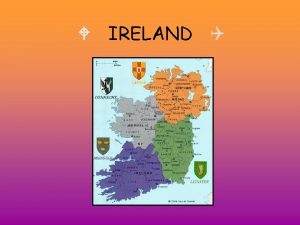Rainwater Harvesting CORK GLASS LTD Introduction Cork Glass










- Slides: 10

Rainwater Harvesting CORK GLASS LTD

Introduction �Cork Glass have 8 machines that use either fresh or recycled water as a coolant as part of the production process. �This created a demand that outweighed the public supply. �Harvested rainwater can be used for all non drinking water uses.

Water Intake

Water Intake �The downpipes are connected to a bank of storage tanks. �Each tank has an 1100 litre capacity. �Capacity can be varied by the number and size of tanks. �These tanks are supported by steel girders on block on flat columns.

Water Intake

Overflow system An overflow pipe discharges excess water to the storm water drainage system.

Pressure By positioning tanks up off the ground, a pressure can be maintained. This is sufficient to flush toilets, feed showers, sinks, irrigation units. We use a small pump to increase pressure to 3 bar.

Cost benefit analysis �Water charges are based on “water-in water-out” at a cost of approximately € 2 per Cubic Meter of water. �Water is metered as it comes into a building and therefore charges also apply to dispose of it. Harvested rainwater by-passes this system as there is no charge for disposing of it.

Set-up costs �All labour and installation was performed by our staff so costs were kept to a minimum. �Tanks € 2500 �Plumbing materials etc € 1000 �Total cost € 3500 �Due to the simplicity of the system, there are little, if any maintenance costs.

Environmental Benefits �Every litre of tap water we use adds to our own carbon footprint. �This water must be treated, pumped and transported great distances just to be flushed away. �It makes sense, where possible, to use the natural resource on our doorstep.
 Corkglass
Corkglass Rainwater harvesting introduction
Rainwater harvesting introduction Future of rainwater harvesting
Future of rainwater harvesting Rainwater harvesting calgary
Rainwater harvesting calgary Rainwater tanks ireland
Rainwater tanks ireland Bibliography of rainwater harvesting
Bibliography of rainwater harvesting Droofs
Droofs Function of rainwater harvesting
Function of rainwater harvesting What is rainwater harvesting
What is rainwater harvesting Coarse mesh in rainwater harvesting
Coarse mesh in rainwater harvesting Life cycle assessment of rainwater harvesting
Life cycle assessment of rainwater harvesting

